Distracted Driving
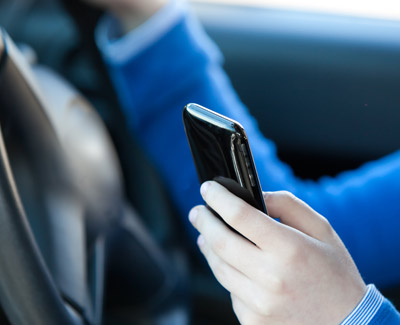
Speak to a Belleville car accident lawyer for help with a personal injury case. Victims have rights, and they should not assume that their accident was purely coincidental. Evidence suggests that over one-fourth of motorists are distracted while driving, and something must be done to stop the spread of this dangerous habit. Learn more in order to serve as a positive role model and respond to impending accidents appropriately.
Am I Susceptible to Distracted Driving?
Everyone is susceptible to distracted driving. There are three main types of distracted driving:
Manual Distractions
This is when a driver takes their hands off of the wheel. Taking a hand off the wheel can be very dangerous. Some drivers believe they can take their hands off the wheel for a few seconds and nothing will happen because modern vehicles have safety features; however, this is false. The prevailing belief is that a car with properly aligned wheels will not swerve out of control, but these drivers do not account for changing gradients in the road surface, adverse weather conditions, speed, and the actions of other drivers.
Visual Distractions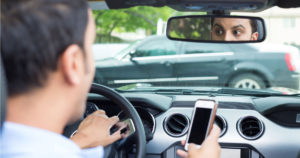
A visual distraction is when the driver takes their eyes off of the road. Drivers look away from the road surface for a number of reasons, and they often believe that slowing down in these instances prevents car accidents. Some drivers glance away from the road, thinking they cannot travel all that far in a few seconds, but everything can change in a short period of time. Industry experts believe the average visual distraction lasts around five seconds. For reference, a motorist traveling 55 miles per hour on the highway can advance 100 yards.
Drivers must be aware of their surroundings at all times because a constant influx of information helps them make wise decisions. When a driver is not paying attention, they do not see the large truck that is swaying out of control, or they do not realize an aggressive driver is cutting across traffic. Drivers should keep their eyes forward and their hands on the wheel.
Cognitive Distractions
A cognitive distraction is when a driver’s focus is not on the road. When drivers do not keep their minds on the road, accidents can quickly happen. Studies also indicate that pregnant women experience cognitive distractions while driving due to symptoms, such as nausea, fatigue, or aches and pains. The same can be said of anyone who is ill or suffering from a chronic health condition. It may be wise for these drivers to carpool or use ridesharing services if they are not feeling well.
Cognitive distractions are insidious because drivers often do not realize they are drifting or losing focus. While attempting to avoid these distractions, drivers must understand how they occur and how to create a safer environment inside the car.
Which Common Distractions Should I Avoid?
When hoping to avoid distractions, drivers can remove the most common distractions from their vehicles. Removing each distraction from the vehicle is nearly impossible, but motorists can create a plan for managing the vehicle. Common distractions include: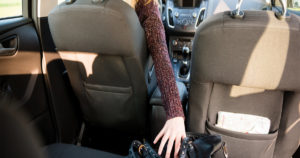
- Cellphones, which constitute a visual, cognitive, and manual distraction.
- Raucous conversations, which can be manual, visual, and cognitive distractions.
- Road rage because it becomes a cognitive distraction.
- Eating, drinking, or smoking, which are manual distractions.
- Grooming, encompassing all three distractions.
- Reaching for an unseen object, a manual and visual distraction.
- Disciplining children, potentially causing all three distractions.
- Daydreaming, which is a cognitive distraction.
When drivers give in to distractions, they can cause any of these accidents:
Sideswipe Collisions
Sideswipe accidents occur when motorists strike each other while changing lanes. A car could slide off the road, or they might sideswipe another vehicle in the process. Sideswipes most often relate to drivers not checking their blind spots before changing lanes. These accidents also occur when drivers simply enter the highway without checking for oncoming traffic. Large trucks can easily sideswipe vehicles lingering in their blind spots, and it is best for drivers to press on instead of remaining distracted in an unsafe place.
Rollover Accidents
Rollover collisions occur when drivers lose control for a brief moment and hit the curb, an uneven section of pavement, or make risky maneuvers. Distracted drivers can cause rollover accidents as well. For example, a driver behind the wheel of a large SUV knows that the vehicle is prone to rolling over during sharp turns. The manufacturer even places a warning sticker regarding rollovers on the sun visor.
Skidding or Hydroplane Collisions
Skidding on ice or hydroplaning on wet roads is common, no matter how diligent drivers may be. A distracted driver, however, may not see a patch of ice, large puddle, or otherwise slick surface. While the vehicle could skid off the road, there are several other vehicles in harm’s way when the skidding or hydroplaning vehicle spins out of control.
Low Visibility Crashes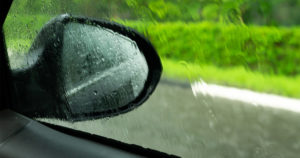
If at all possible, drivers should not continue when there is low or no visibility. Low visibility crashes occur when drivers cannot see or do not have a good range of vision. They often continue while distracted because they must remain on schedule or feel driving in these conditions is not dangerous. Typically, low visibility crashes occur during storms or in the presence of fog. Studies from the National Highway Traffic Safety Administration (NHTSA) show that over 38,000 accidents occur across the United States when fog is present. Pedestrians, bicycles, motorcycles, and small cars are also difficult to see under foggy conditions.
According to the Federal Highway Administration (FHWA), three main factors improve visibility: retroreflective signage, reflective markings on the pavement, and roadway lights. In the absence of these elements, it becomes difficult to judge where the road is and how safe it is to drive. Distracted drivers in these situations simply make the problem that much worse. Distracted drivers may also feel they have enough light and visibility during the dawn and dusk hours, but the NHTSA finds that four percent of all rural fatalities occur during these times.
Minor Accidents
Low-speed crashes in parking lots or in traffic can still cause whiplash and property damage, and whiplash requires a potentially lengthy recovery. Distracted drivers cause these accidents by looking away at the last possible second, thinking nothing else can change. For example, a driver backing out of a parking space while looking down at their phone may hit another car. The same is true in standing traffic because drivers feel they can slow to a near-stop, look down at their phone, or perform another task.
What are Common Mistakes Made by Distracted Drivers?
Drivers often make small mistakes that create distractions, despite their best efforts. While these mistakes may seem benign, drivers might find themselves in these situations because they did not prepare to drive safely:
Adjusting climate settings after setting off. Motorists often get behind the wheel in cold weather and attempt to warm up after setting off. Take a moment or two to allow the vehicle to warm up, set the climate settings properly, and get comfortable. Motorists can remain in this state for the duration of the drive in most cases. If the vehicle has climate controls on the steering wheel, drivers can make changes on the road. Otherwise, drivers should wait until they come to a complete stop before adjusting the heat or cooling unit.
Searching for directions after departing. Drivers should check for directions before departing. Most modern navigational devices can use the speakers and reroute. While drivers may feel as though they must stare at the map, it is best to set the phone aside and listen to the directions.
Choosing new music mid-drive. Choosing new music mid-drive is highly dangerous. Searching the radio or playlists in a music application is very distracting. Choose a playlist before leaving, and only allow other people in the car to change the music.
Trying to silence phones after leaving. Silence notifications on cellphones before leaving. When drivers must grasp their phones, they are cognitively and manually distracted. These issues often cause distractions in the worst circumstances.
Where Do Distracted Driving Crashes Occur?
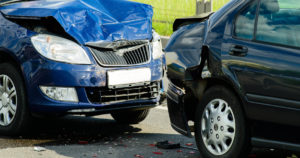 Some common places for distracted driving accidents include:
Some common places for distracted driving accidents include:
Railroad Crossings: Railroad crossings are dangerous. A distracted driver might not see or hear an oncoming train in a crossing where no lights or bars are present. Even if a train is not crossing, railroad workers may occupy the intersection as they repair the rails, signs, or crossbars.
Intersections: Drivers entering intersections must know if traffic is approaching. Some motorists do not see the stop sign or stop light, and they pass through the intersection, causing an accident. Side-impact accidents occur when a distracted driver attempts to turn right without checking for oncoming traffic, or when they turn left and do not realize other drivers may pass through the intersection. Pedestrians could also be injured or killed in these accidents.
One-Way Roads: Distracted drivers may turn the wrong way down one-way roads. A head-on collision is likely in this circumstance. A car accident will be more severe if a distracted driver turns the wrong way onto a highway entry ramp.
School Zones: Distracted drivers entering school zones may well exceed the speed limit or not see pedestrians and vehicles. A distracted driver might also lose control and drive onto the sidewalk where walkers are present. If the school hosts extracurricular activities, traffic conditions could deteriorate quickly, and a distracted driver can easily cause an accident. Drivers must know the local area and remain alert to common traffic conditions around school zones.
Sharp Curves: Distracted drivers approaching sharp curves may not know how much they must slow down to turn corners safely. Even if there are signs indicating that a sharp curve is ahead, a distracted driver cannot react to signs they have not seen. They might drive off the road, make an emergency stop and cause a rear-end crash, or strike another vehicle when making a wide turn.
Why is Distracted Driving Especially Dangerous in Rural Areas?
Distracting driving can be especially dangerous in the rural areas southeast of St. Louis because farm vehicles, walkers, and bicyclists feel comfortable on these roads. A speeding driver who believes a rural stretch of road is empty might slam into a combine harvester, tractor, lawnmower, or work vehicle towing equipment at a low speed.
Aside from these vehicles using the road directly, they also enter the road randomly during the day. A tractor plowing a large field may jut into the road for only a few moments, and drivers must be aware of the presence of these vehicles. Farm workers using manual tools might stand close to the road while working, or they may step into the road to complete their work. Rural roads host 2.8 times more accidents, according to research by the NHTSA. In 2018 alone, there were 386 fatalities on the rural roads of Illinois.
Visibility in these areas is often extremely low as homes are far apart and there is limited light sources. Anyone using their high beams also needs to be careful because they could distract another driver and cause an accident. Drivers should also slow down. In 2017, 27 percent of fatal car accidents were caused by speeding. Even if there are only a few vehicles on the road, drivers might swerve to avoid animals and strike pedestrians, bicycles, farm vehicles, or other drivers.
Do Teenagers Frequently Cause Distracted Driving Accidents?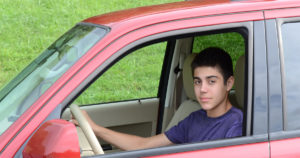
Teenage drivers pose a greater danger than others because they are new to driving and often grew up with handheld technology. Using a cellphone and performing other tasks is normal for a teenager, and this habit may continue behind the wheel.
Teenagers need more help learning how to drive without distractions. In St. Clair County alone, there are about 35,000 students in the school system and a total of 14 high schools. Many of these students are teenagers, they often drive themselves to school, or they receive cars as birthday or graduation presents. Parents must play an active role in helping their teenagers drive safely.
The graduated driver licensing program in Illinois notes that the leading cause of death for young people between 15 and 20 years old is the traffic accident. A teenager can obtain an instruction permit at 15 years old, and it must be held for nine months with 50 hours of practice and 10 hours of night driving. Cellphone use is prohibited for all drivers under 19 years old.
Parents are required to certify that teenage drivers completed mandatory practice hours. Parents must be active participants in their child’s driving, pay for a state-approved driver education course, and limit passengers to one. Drivers cannot receive a full license until they are 18 years old, but they must avoid traffic offenses.
Parents should consistently tell their children to slow down, put away cellphones, and keep their hands on the wheel. Modeling safe driving helps, and persistent instruction ensures that teenage drivers remember what to do in dangerous situations.
Can I Receive Compensation After a Distracted Driving Collision?
Victims may recover compensation after distracted driving accidents, no matter the severity of their injuries. Since each accident is different, a lawyer must review the accident and determine the level of malice, inaction, or misconduct involved. A lawyer also collects medical records and income statements to recover all medical expenses, lost income, loss of quality of life, pain and suffering, and punitive damages.
In Illinois, punitive damages pay a plaintiff for the willful, wanton, outrageous, malicious, or fraudulent actions of the offending driver. There is no cap on punitive damages in Illinois, but a lawyer must present a compelling case to win the award.
A wrongful death claim includes family members recovering from the death of a loved one in a distracted driving accident. A representative of the decedent’s estate files the lawsuit on behalf of the victim’s spouse, children, or next of kin. Damage recovery in this instance includes funeral expenses and court costs related to the will.
How can a Lawyer Help Me?
Working with a lawyer helps a distracted driving accident victim create a compelling case to prove negligence or misconduct. In many accidents, the offending driver may not receive a citation for distracted driving. Other evidence will show that the driver was not operating their vehicle properly, and a lawyer uncovers the evidence that helps a victim proceed with a lawsuit.
A lawyer also guides the case and the client. A victim often does not know what to do next, and they can turn to a lawyer who understands the legal process, the local courts, and how to properly litigate the case. Trusting a lawyer gives the victim a partner for the duration of the case.
Belleville Car Accident Lawyers at The Cates Law Firm, LLC Advocate for Those Injured in Distracted Driving Accidents
Reach out to one of our Belleville car accident lawyers at The Cates Law Firm, LLC if you were involved in a distracted driving accident. We help our clients determine the facts behind each case and seek compensation. Call us at 618-277-3644 or contact us online for a free consultation. Located in Swansea, Illinois, we serve clients throughout St. Louis, Belleville, East St. Louis, Edwardsville, Granite City, Waterloo, Chester, Carbondale, St. Clair County, Madison County, Monroe County, Randolph County, and other regions throughout Southern Illinois.

